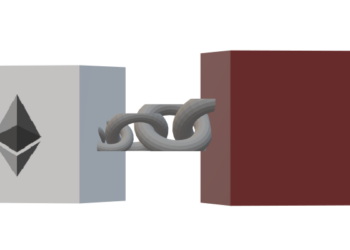DEX is short for “Decentralized Exchange.” A Decentralized Exchange is a peer-to-peer (P2P) marketplace where traders come together to trade their tokens directly without intermediaries. Decentralized exchanges fulfill one of Satoshi’s visions of peer-to-peer transactions that bypass the need for banks or custodial third parties. DEXs are powered by blockchains and smart contracts that function as an authority, self-executing transactions when exchange conditions are met.
How Do DEXs Work?
Smart contracts power DEXs, executing trades and setting token prices through Automated Market Makers (AMMs). The funds used for executing trades come from liquidity pools. In DeFi, liquidity pools are a set of protocols that allow Liquidity Providers (LPs) to lock up cryptocurrencies for a particular period in exchange for rewards. This helps create and maintain liquidity in the network.
Decentralized exchanges are the backbone of the DeFi ecosystem. One of their biggest advantages is that users maintain full control of their private keys, making DEXs non-custodial. This reinforces the phrase: “Not your keys; not your crypto.” Unlike centralized exchanges, most DEXs do not enforce government-mandated Know-Your-Customer (KYC) and Anti-Money Laundering (AML) laws, which gives users more privacy and freedom.
Examples of Dex
Popular DEXs in the crypto space include Uniswap, Sushiswap, Pancakeswap, and more recent players like Curve and Balancer.
Features of DEXs
- Privacy. DEXs do not require personal details like name, address, or location. This protects users from censorship and potential abuse.
- Access to More Crypto Options. Since DEXs are decentralized, they usually list a wider range of tokens, including newer and lesser-known ones that may not be available on centralized exchanges.
- Lower Transaction Fees. DEXs often have lower transaction fees than centralized exchanges. However, since transactions occur on the blockchain, gas fees can vary depending on network congestion.
Difference Between a DEX and a CEX
DEXs operate differently from Centralized Exchanges (CEXs). Centralized exchanges function like traditional banks in the Web3 space. They are run by centralized entities that control digital asset management and trading. Unlike DEXs, CEXs require users to go through KYC verification and store funds in custodial wallets controlled by the exchange.
CEXs also offer additional services like fiat-to-crypto conversions and direct withdrawals to bank accounts. They maintain liquidity by ensuring that there is always a buyer and seller ready to trade.
Comparison Table: DEX vs. CEX
| Features | DEX | CEX |
| Custodianship | Non-custodial (user controls keys) | Custodial (exchange controls keys) |
| Control | Decentralized | Centralized |
| Transaction Execution | Blockchain & smart contracts | Central authority |
| Liquidity Source | Liquidity pools | Exchange funds |
| KYC & AML Compliance | No | Yes |
| Fiat Withdrawals | No | Yes |
Importance of DEXs
- DEXs are important because they protect users from the limitations and risks of centralized exchanges. Here’s why they matter:
Censorship Resistance. Since no central authority controls DEXs, they are less likely to be shut down or restricted. - More Crypto Choices. DEXs list a wider variety of cryptocurrencies, including newly launched tokens.
- Privacy Protection. No KYC requirements mean greater privacy and accessibility for users worldwide.
- Full Control of Funds. Users maintain control of their private keys and assets, reducing risks associated with exchange hacks.
Conclusion
Decentralized Exchanges (DEXs) are a vital part of the Web3 ecosystem. They give users full control over their funds, provide greater privacy, and offer access to a wide range of crypto assets. As DeFi continues to grow, DEXs will remain an essential tool for traders looking for secure and decentralized ways to swap tokens.















